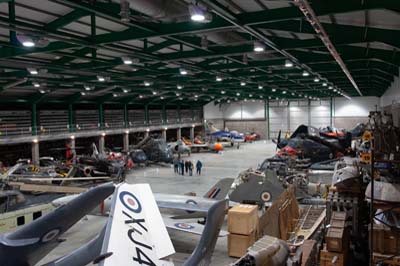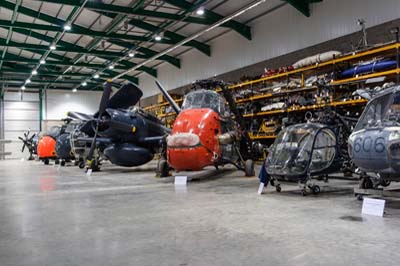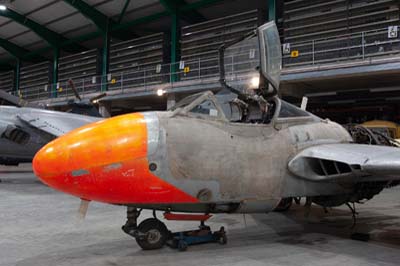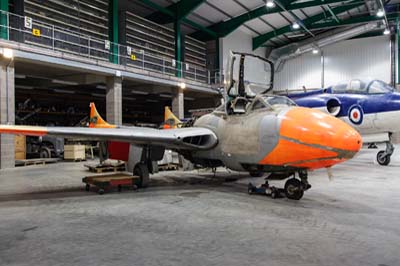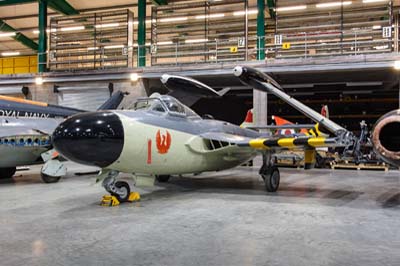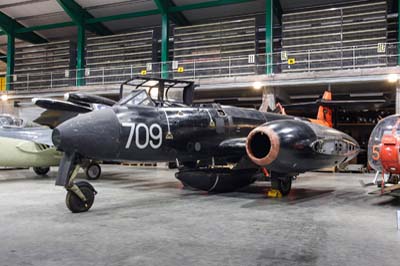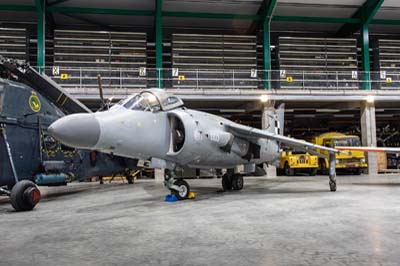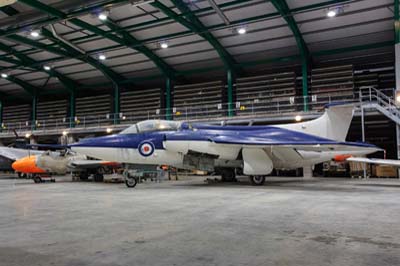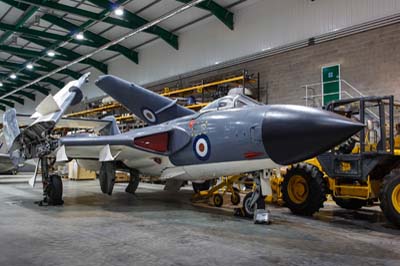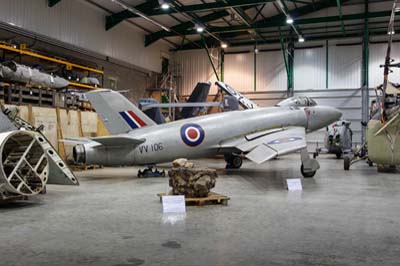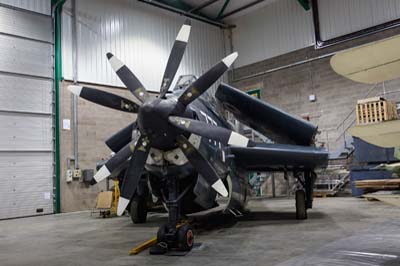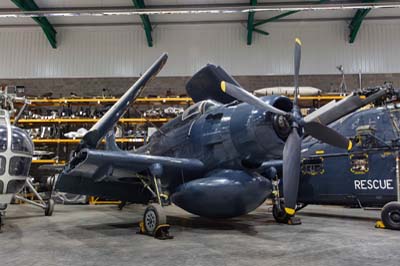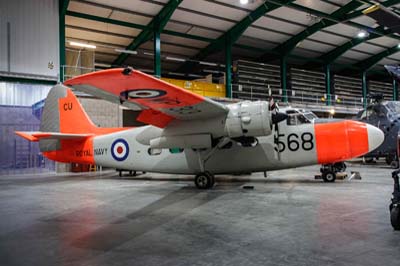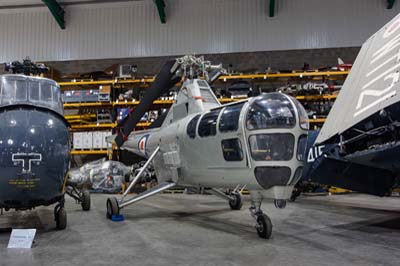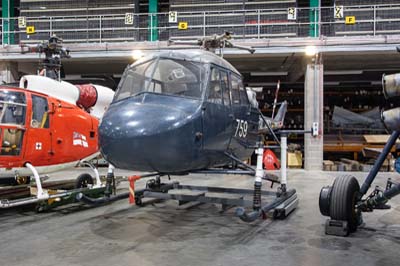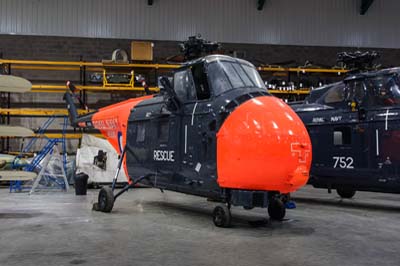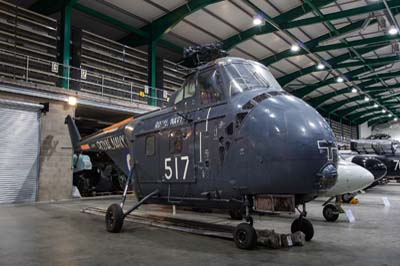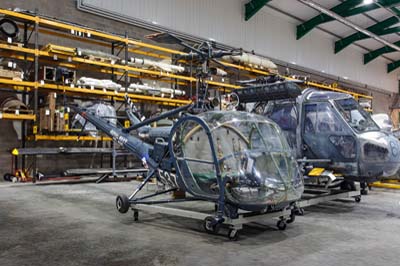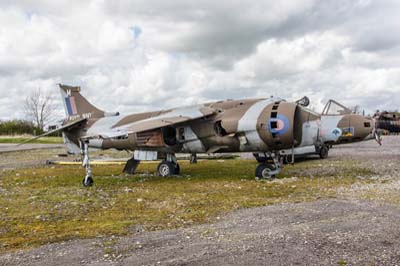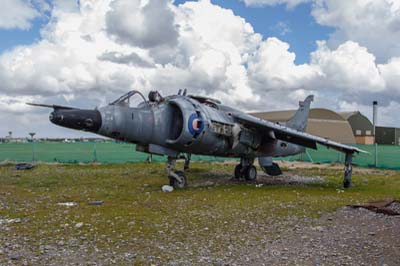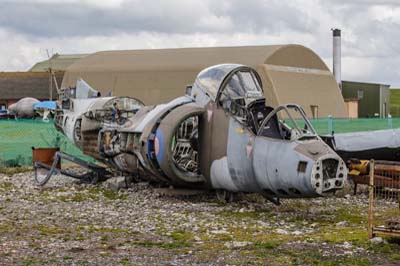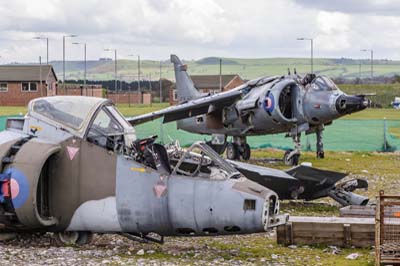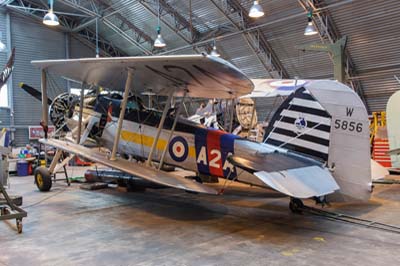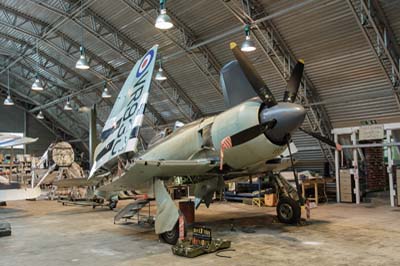Fleet Air Arm Museum's Reserve
Cobham Hall - RNAS Yeovilton
April 2005
|
| Situated on the opposite side of the road to the Fleet Air Arm Museum (FAAM) at RNAS Yeovilton, Cobham Hall houses the FAAM's extensive reserve collection of ex FAA aircraft. Unlike the museum itself, which is open throughout the year, Cobham Hall is only available for inspection on just a few pre-announced open days. These total around three per year. It was decided in the 1990s, to try and gather together all the aircraft attached to the FAAM, that were held at numerous locations around the country, in one dedicated place. Cobham Hall, as it was eventually named, cost £3 million to construct, with much of the money being granted by the Heritage Lottery Fund. It was completed in 2000 and is a totally purpose built building. It is divided into two sections each separated by a totally fire proof wall for added protection.
|
One side is for the aircraft the other smaller section is for offices and a vast collection of Royal Navy and FAA related artifacts and documents. Preserving and protecting the priceless exhibits is not easy, so air conditioning and a state-of-the-art fire detection and protection system has been installed. The walls are double thick and the windows double-glazed. The roof, which added significantly to the eventual cost, is much higher than the cost conscious architects would have preferred. This increased height allows the museum's crane to operate without restriction from within the building itself. This is important when aircraft are to be assembled or disassembled during restoration. The larger aircraft in particular no longer have to be towed outside before they can be worked upon.
In September 2003 the dispersed reserve collection of aircraft started to arrive. My latest visit some eighteen months after the opening still saw many of the aircraft in various states of restoration with some exhibits still not fully assembled.
During my visit the staff were very helpful indeed. They are all very enthusiastic about the project, dedicated to preserving the FAA's proud heritage. My guide was informative, also allowing me to move distracting information boards from in front of the aircraft, to make photography in the well lit hangar as easy as possible. But what is on show in this Aladdin's cave containing almost 40 complete aircraft? |
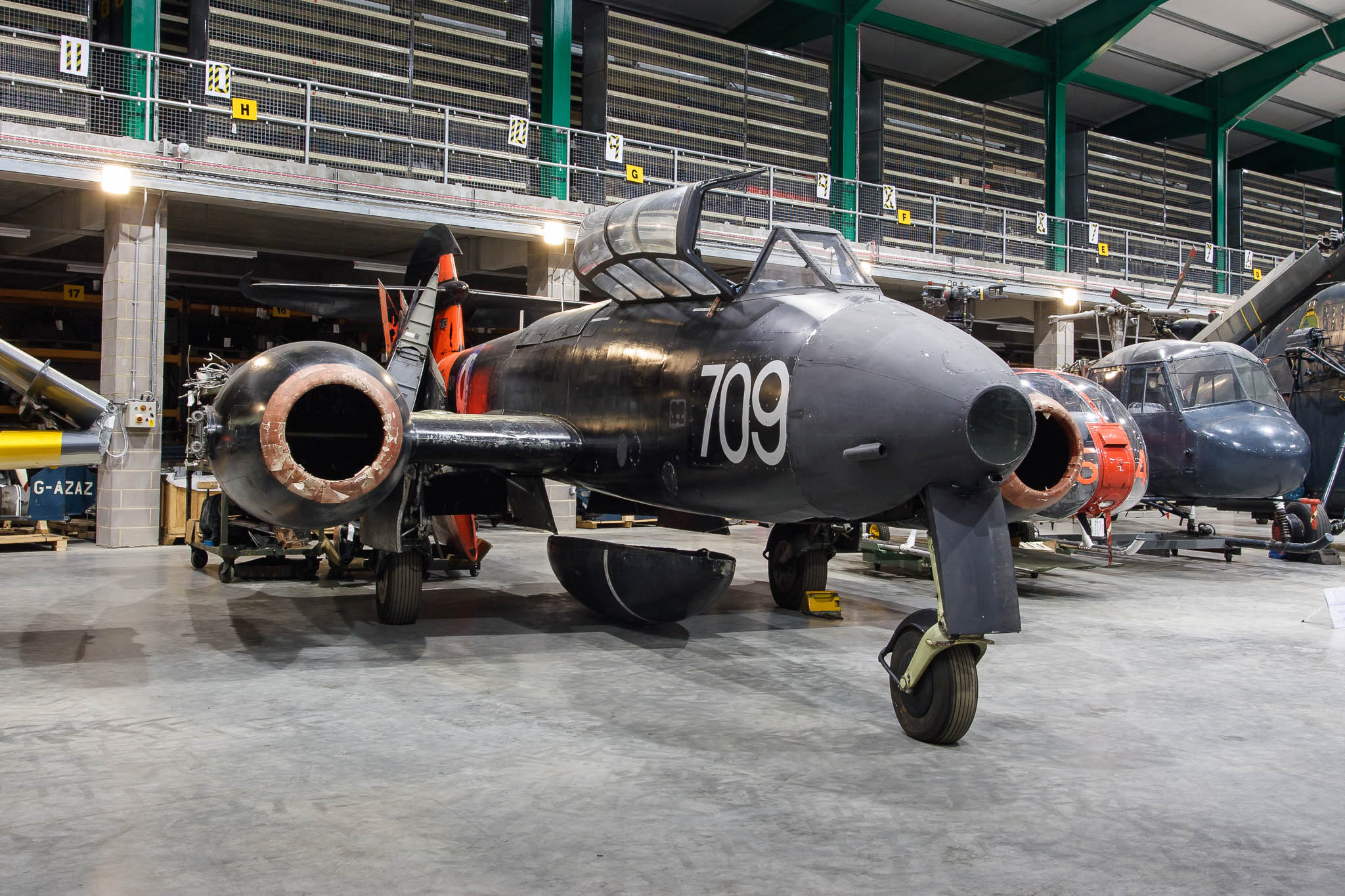 |
| Gloster Meteor T.7 (WS103 'VL 709'). |
Left to right: de Havilland Vampire T.22 (XA129) stripped down to reveal the fuselage's laminated plywood construction.
DH Sea Venom FAW.21 (WW138 'Z-227') with wings folded.
Gloster Meteor T.7 (WS103 'VL 709') not yet fully assembled. |
Left to right: Bae Sea Harrier F/A.2 (XZ499 '003').
Blackburn NA-39 (XK488).
DH Sea Vixen FAW.1 (XJ481).
Supermarine 510 (VV106) First flight and trials from Boscombe Down in 1948 before modificed for naval use in 1950. Final flight in 1955 and moved to 1 SOTT at RAF Halton. Moved to RAF Cardington, RAF Colerne and RAF St Athan (Historic Aircraft Collection) before its move to Cosford in 1977. In 1990 it was moved to the FAAM stores at RNAS Lee on Solent and later RNAS Wroughton and then Cobham Hall - RNAS Yeovilton. It has the remains of a Sir Barnes Wallis bouncing bomb plonked in front of it! As photographed at Cosford in 1989. |
Left to right: Fairey Gannet COD.4 (XA466 'LM 777'),
Douglas Skyraider AEW.1 (WT121 'CU 415'),
Hunting Percival Sea Prince T.1 (WP313 'CU 568'),
Westland Dragonfly HR.1 (VX595). |
Left to right: Saunders Roe P.531 (XN332 '759'),
Westland Whirlwind HAS.7s (XL853 'PO' and XG594 '517'),
Hiller HTE.2 (XB480 '537'). |
| Yeovilton Wrecks and relics |
Left to right: Hawker Siddeley Harrier GR.3 (XV755 'M').
Hawker Siddeley Harrier GR.3 (XW630).
British Aerospace Harrier T.4 (ZB601). |
Left to right: Fairey Swordfish Mk.1 (W5856) 'The Navy Wings Heritage Flight' at RNAS Yeovilton.
Hawker Sea Fury FB.11 (VR930 'Q-110') 'The Navy Wings Heritage Flight' at NAS Yeovilton. |
